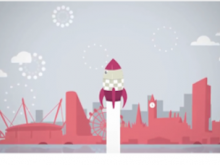News
Financial Instruments are not Rocket Science: Join CSI EUROPE Network Final Conference
Take part in URBACT's CSI Europe Network at an energetic 1-day conference in rethinking ways of financing urban development in Lille, France on 5...
CTUR
CTUR
Cruise activity and the recovery of urban and harbour building heritage: Strong elements of the common interest of sea towns to develop and strengthen the urban tourism sector.
Closed
RE-Block
RE-Block
REviving high-rise Blocks for cohesive and green neighborhoods. The main objective addressed by RE-Block is to foster efficient regeneration of these neighborhoods, making them more attractive and improving their environmental quality, whilst creating an integrated tailor-made approach to combat...
Closed
SURE
SURE
Implementation of integrated socio-economic regeneration strategies which build on local strengths and opportunities. This will be achieved by developing an integrated Socio-economic Urban REhabilitation Model for small and medium sized cities.
Closed
P4C
P4C
Placemaking is a concept that emerged to describe the intentional process of activating new or existing public spaces to create that emotional connection.
Closed
Roma-NeT II
Roma-NeT II
ROMA-NeT URBACT II project was established to create a new approach to stimulate information sharing and development across the complex Roma integration policy and operational environment in nine European cities.
Closed
Wood Footprint
Wood Footprint
Manufacturing and selling big items requires big spaces as factories and large showrooms. During the prosperity years of manufacturing sector in Europe, wood industry dependent cities have witnessed a pop-up of such buildings along the main road axis and suburbs, strongly making urban development...
Closed
USEAct
USEAct
The aim of USEAct is to define ways to achieve opportunities for people and businesses to settle in existing locations without consumption of further land, thanks to new planning and partnership approaches.
Closed
URBACT Markets
URBACT Markets
The goal of this project is to understand and explore the role of urban markets as key drivers of change in terms of local economic development, regeneration and sustainable living.
Closed








